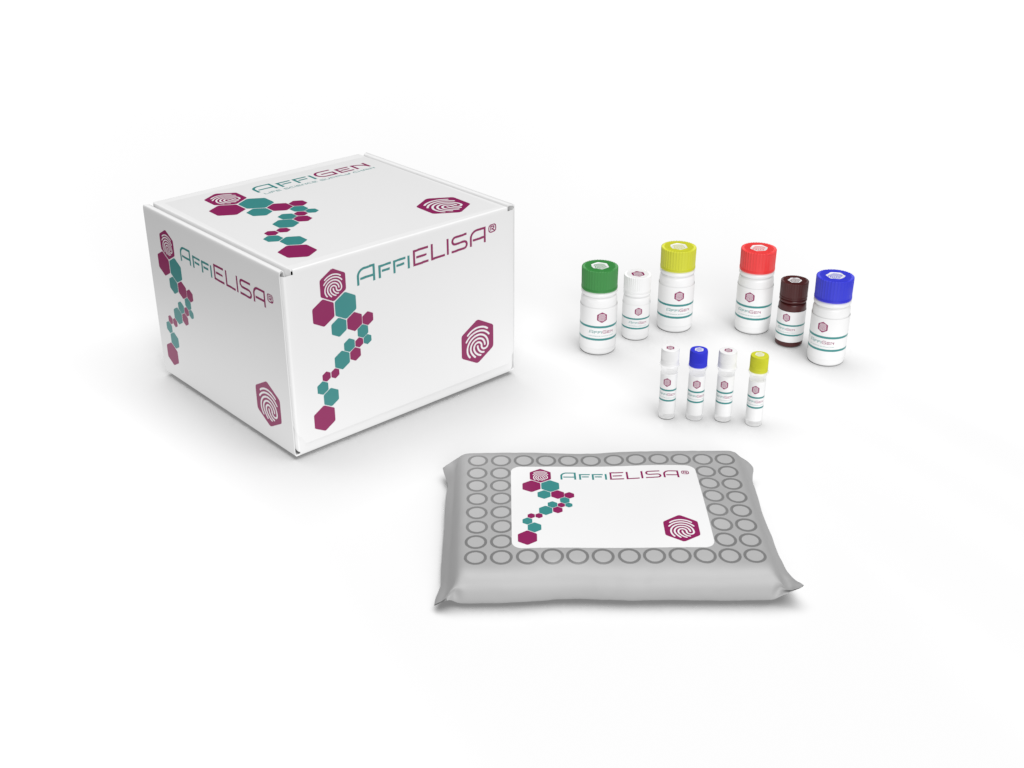Avian Influenza Virus (FLU) ELISA Kit – Technical Overview
The Avian Influenza Virus (FLU) ELISA Kit is an enzyme-linked immunosorbent assay designed for the qualitative and/or quantitative detection of Avian Influenza Virus (AIV)-specific antibodies or antigens in biological specimens such as serum, plasma, or tissue homogenates. This kit is applicable in avian diagnostic virology, surveillance programs, vaccination efficacy studies, and pathogen screening in poultry populations.
1. Principle of the Assay
The AIV ELISA kit is generally based on either indirect ELISA (for antibody detection) or sandwich ELISA (for antigen detection):
- Indirect ELISA for Antibody Detection: Recombinant or purified inactivated avian influenza viral antigens (such as hemagglutinin [HA] or nucleoprotein [NP]) are pre-coated onto microplate wells. Test sera are added, and AIV-specific antibodies—if present—bind to the immobilized antigens. After washing, a species-specific enzyme-conjugated secondary antibody (typically HRP-linked anti-chicken IgY) is added. The presence of bound antibody is visualized using a chromogenic substrate (e.g., TMB), and absorbance is measured at 450 nm.
- Sandwich ELISA for Antigen Detection: Capture antibodies specific to conserved AIV epitopes are immobilized on the plate. Samples containing AIV particles bind to the capture antibodies. A biotinylated detection antibody specific to a different epitope on the same antigen is then added, followed by streptavidin-HRP and substrate. This configuration allows for high specificity and sensitivity in detecting circulating AIV antigens such as NP, M1, or HA proteins.
2. Target Subtypes and Strain Coverage
Depending on the kit design, ELISA platforms may be subtype-specific (e.g., H5, H7, H9), or broad-spectrum, recognizing conserved AIV proteins such as:
- Nucleoprotein (NP) – highly conserved among all AIV subtypes.
- Matrix Protein 1 (M1) – useful in differentiating type A influenza.
- Hemagglutinin (HA) – subtype-specific; used for H5/H7/H9 classification.
Kits may comply with WOAH (OIE) standards for international trade and surveillance of notifiable AIV strains, particularly Highly Pathogenic Avian Influenza (HPAI).
3. Sample Types and Compatibility
- Species: Primarily validated for Gallus gallus domesticus (chickens), Anas platyrhynchos (ducks), and other domestic and wild avian species.
- Matrix: Serum, plasma (EDTA, heparin), or occasionally egg yolk extracts for maternal antibody assessment.
- Volume: Typical sample input is 50–100 μL per well.
4. Sensitivity and Specificity
- Analytical Sensitivity (LOD): Can detect as low as 1–10 ng/mL of recombinant HA or NP protein or ≥1:1600 diluted positive serum, depending on platform.
- Analytical Specificity: Cross-reactivity is evaluated against other avian respiratory pathogens (e.g., Newcastle Disease Virus, Infectious Bronchitis Virus) and is generally <2% in validated kits.
- Diagnostic Sensitivity/Specificity: Typically >95% based on field sample evaluation and ROC analysis using RT-PCR as gold standard comparator.
5. Quality Control and Standardization
Each kit includes:
- Positive and negative control sera
- Blank and standard curve wells (for quantitative formats)
- Pre-coated microplate with 96 wells (breakable strips)
- Reagents: Sample diluent, wash buffer, enzyme conjugate, substrate (TMB), stop solution
- IFU: Instructions for Use with cutoff interpretation criteria
Inter-assay and intra-assay CVs are generally <10%, ensuring high reproducibility.
Applications
- Epidemiological surveillance in avian populations
- Vaccination monitoring (e.g., seroconversion post-inactivated H5/H7 immunization)
- Outbreak confirmation and tracing
- Seroprevalence studies in wild bird reservoirs
- Differentiation of infected from vaccinated animals (DIVA) in certain formats when paired with recombinant NP or M2-based antigens
7. Regulatory and Biosafety Notes
- Kits are typically intended for in vitro diagnostic use or research use only, depending on certification.
- Proper BSL-2 containment practices are required when handling field-collected avian specimens.
- Conforms to OIE Manual of Diagnostic Tests and Vaccines for Terrestrial Animals for AIV serology.
ELISA%20Kit%20:%2096T?unique=e72adab)
